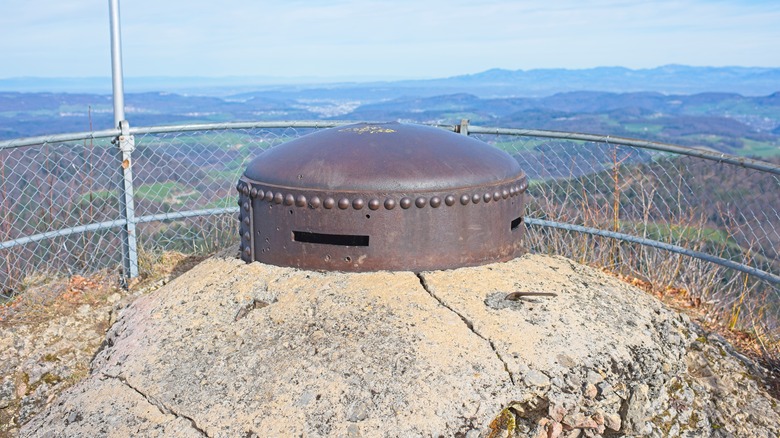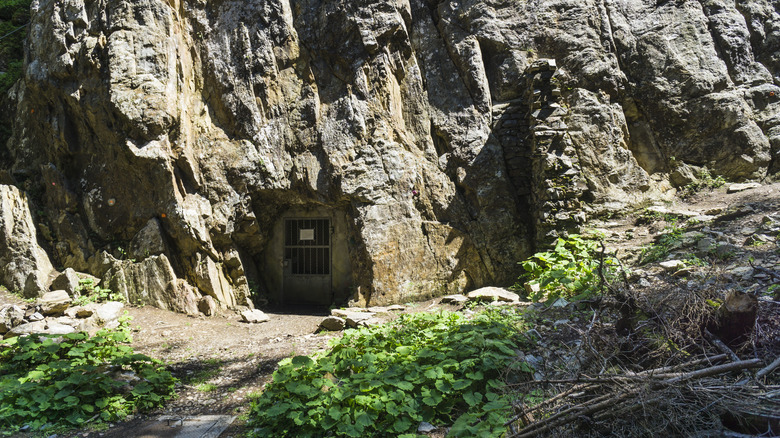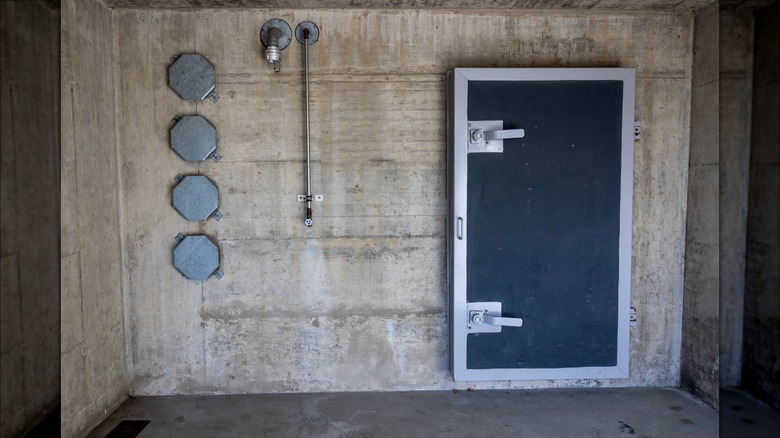The Real Reason Switzerland Has So Many Secret Bunkers
Despite being a relatively small European power, Switzerland is famous for many things: Its mighty mountains in the Alps, its incredible food (especially its chocolate), its status as a banking center, and, for some, its reputation as a tax haven. But on the world stage, the country is especially known for its ongoing policy of military and political neutrality — something it has managed to maintain since the 19th century through some of the largest conflicts in human history. Despite some finding the practice of neutrality in diplomatic affairs to be problematic — and indeed Switzerland has found itself mired in controversy on occasion for its willingness to trade with both sides during wars — remaining neutral during periods of bloody conflict is no mean feat.
As noted by SOFREP, during World War II Switzerland found itself potentially at the mercy of an aggressive foreign power, Adolf Hitler's Nazi Germany, the territory just over the border to the north. Rather than attempt to align itself with the Allies, the Swiss response was to literally dig in deep and defend itself with countless fortifications that would make crossing the Alps close to impossible for the Axis forces. This included riddling the mountain range with thousands of secret bunkers, the majority of which remain open today.
The growing prospect of Nuclear War
The world entered the nuclear era in 1945 when the U.S. confirmed the success of the first atomic bomb test and then deployed the technology against Japan in the bombings of Hiroshima and Nagasaki. The attacks are credited as having led to the end of World War II, but the truth is that the bombings caused the deaths of at least 200,000 civilians, destroyed innocent lives, and pushed the needle toward potential nuclear armageddon and the end of humanity. As Oppenheimer himself famously quoted: "Now I am become death, the destroyer of worlds."
The future of the human race became even more precarious in 1949 when the USSR also developed atomic weapons. This meant that any open warfare between the two superpowers would likely escalate into full-blown nuclear destruction, threatening the safety of virtually every country on Earth. So though the horrors of World War II were thankfully at an end, it seemed the world remained a dangerous and volatile place. As such, the conflict-averse people of Switzerland decided to remain on guard — and build upon the defenses they had put in place as Europe fought. In the early 1960s, the Swiss government passed legislation that ensured every Swiss citizen had a right to bunker access and undertook a mass bunker-building scheme to realize their vision of national safety in the event of nuclear war.
A world-beating bunker program
Much of the infrastructure that world governments put in place to limit the damage caused by war of various kinds — such as the "Anderson shelters" built throughout the U.K. to protect civilians from bombings during the Blitz — have disappeared from view and receded from memory over the decades. But in Switzerland, the bunkers put in place to protect the country from the potentially devastating effects of nuclear conflict largely remain.
That is not to say, however, that the Swiss government has constantly been building bunkers for the last 60 years. In fact, as the Cold War cooled and Europe seemed to revert to a state of relative peace, the policy of bunker defenses understandably became a background issue, and investment and maintenance slowed. Nevertheless, it is still written into Swiss law that every citizen has the right to a bunker — a policy that came back to the fore with the outbreak of the war in Ukraine in 2022. Today, Switzerland's bunkers are generally still maintained to a high standard and are said to number about 365,000 across the country, with more than enough space for the country's population of 8.6 million (via Euronews).
According to swissinfo.ch, it is believed that more than $13 billion has been invested in the building and maintenance of Swiss bunker systems since their creation came into law back in 1962.


